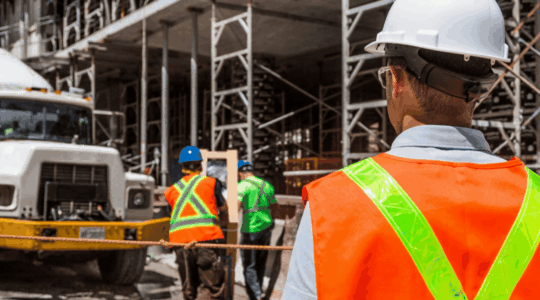Construction
Construction Insurance Exclusion Trends That Could Cost You
Protect your construction project by knowing what your insurance policy leaves out.
September 29, 2025
As the construction industry continues to evolve amid economic pressures, legal reforms, and environmental challenges, insurance exclusions are becoming increasingly relevant—and potentially costly—for contractors and developers. Understanding what your construction insurance policies don’t cover is as important as knowing what they do.
What Are Exclusions, and Why Do They Matter?
Insurance exclusions are specific conditions or types of damage that your policy will not cover. In construction, these exclusions can leave businesses vulnerable to significant financial losses if not properly addressed. With rising nuclear verdicts, increasing extreme weather events, and shifting legal standards, exclusions are playing a larger role in risk management strategies.
Which Exclusions Are Impacting Construction Now?
Based on recent insights, here are some of the most pressing exclusions impacting construction businesses.
Residential Work Exclusions
Carriers’ appetite for contractors involved in residential work is shrinking, especially for roofers and HVAC contractors. These trades are seeing steep premium increases as insurers pull back from the residential market. This trend reflects growing concerns over loss frequency and severity in residential settings, making it harder for these contractors to secure affordable coverage.
Natural Disaster-Related Exclusions
Floods, earthquakes, and wildfires are commonly excluded from standard commercial property policies. With the U.S. experiencing a record number of billion-dollar weather events in recent years, insurers are increasingly limiting coverage in high-risk areas or exiting those markets altogether. Construction firms in these zones may face higher premiums or reduced coverage options.
Environmental and Sustainability Risk
Unsustainable building practices, such as those contributing to pollution or excessive carbon emissions, are drawing increased scrutiny. These practices can lead to professional liability claims, which certain policies may exclude or limit. As environmental regulations tighten, insurers may exclude coverage for projects that fail to meet eco-friendly standards.
Legal and Contractual Liabilities
New building safety legislation requires strict compliance, especially for high-rise residential structures. Failure to meet these standards could result in legal penalties and denied claims. Additionally, insolvency-related project delays and contract breakdowns are becoming more common, and many policies exclude coverage for losses stemming from poorly managed contracts or bankrupt partners.
Exclusions for Complex and High-Risk Operations
Contractors working “at height” or operating in states with challenging insurance environments are seeing several common exclusions:
- Action Over Exclusion: Particularly relevant in New York, this exclusion stems from stringent labor laws. It removes coverage when an injured subcontractor sues a third party (like the general contractor), often resulting in nuclear verdicts.
- Classification Limitation Endorsement: This restricts coverage to only the operations listed in the policy’s classification codes, leaving contractors exposed if they perform work outside those parameters.
- State-Specific Exclusions: Coverage is increasingly being denied for operations in high-litigation states such as New York, Florida, and Colorado.
- Wildfire Exclusions: These have become more common following recent catastrophic fires in California, with insurers excluding fire-related losses in high-risk zones.
Property Not Covered
Commercial property insurance often excludes specific items such as the following:
- Underground foundations and pipes
- Bridges, docks, and piers
- Electronic data and valuable papers (unless specially endorsed)
- Contraband or property involved in illegal trade
These exclusions can be particularly impactful for construction firms working on complex infrastructure or managing sensitive client data.
How Can Construction Businesses Mitigate the Impact of Exclusions?
While exclusions are unavoidable, they don’t have to be detrimental. Construction businesses can take proactive steps to reduce their exposure, such as the following:
- Review policies carefully to understand all exclusions.
- Add endorsements or purchase separate policies to fill coverage gaps.
- Invest in risk management strategies like safety training, eco-friendly practices, and strong contract oversight.
- Consult with insurance professionals to tailor coverage to your specific operations and location.
In today’s volatile construction landscape, exclusions are more than fine print; they’re potential financial pitfalls. By staying informed and working with trusted advisors like Hylant, construction businesses can navigate these challenges and build a more resilient future.
Related Reading: What Is Builders Risk Insurance?
The above information does not constitute advice. Always contact your insurance broker or trusted advisor for insurance-related questions.


